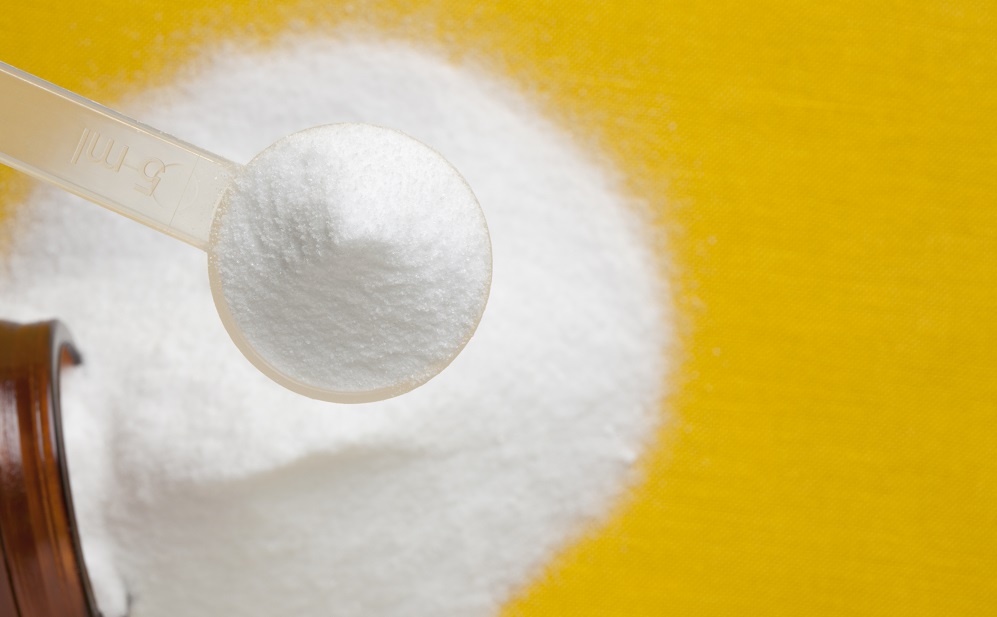The effects of creatine can be maximized depending on how much is taken and when it is taken. These concepts relate to two specific ideas in creatine consumption – the creatine cycle and the loading phase.
The creatine cycle is a concept wherein creatine consumption is maximized by having alternating periods of consuming creatine with periods of no creatine consumption. On the other hand, the loading phase is the initial period of creatine consumption wherein a significantly higher dose is taken. However, while there are studies supporting the benefits of creatine loading, there is no evidence supporting the creatine cycle.
This article will discuss the basics of creatine, what a loading phase is, what a creatine cycle is, and if the two are necessary for creatine usage.
What is Creatine?
Creatine is an organic compound that is naturally produced in the body (specifically the liver, kidneys, and pancreas).
Creatine can also come from your diet. A hundred grams of food such as meat, fish, or poultry can have around 0.5-1.0 grams of creatine. While cooking can degrade the creatine into creatinine, food sources can account for approximately 1-2 grams of daily creatine intake.
Creatine is involved in one of the processes that produce ATP (adenosine triphosphate), the major energy currency in the body. Inside the mitochondria, a working cell uses ATP for various cellular processes and when used up, ATP is reduced into ADP (adenosine diphosphate). There are a few ways the cell can generate more ATP, but one way is to use creatine to recycle ADP back into ATP.
Supplementary creatine can help to boost muscle workload, enhance muscle fiber size, increase lean body mass, and help prevent tissue damage.
What is a Loading Phase?

The loading phase is simply the concept of initially taking a higher dose of creatine to quickly saturate the creatine content in the muscles in a safe manner.
Compared to the daily maintenance dose of 3-5 grams, the loading phase will have a person take approximately 20 grams of creatine per day for the first five to seven days. The higher amount of creatine (~20 grams) is recommended to be divided up throughout the day. For example, an individual going through a loading phase can take five grams of creatine upon waking up, before a workout, after a workout, and before sleeping.
Many studies have looked into creatine loading as a way to boost physical performance. Particularly whether short-term loading can improve athletic prowess.
In a 1995 paper published in the Australian Journal of Science and Medicine in Sport, the researchers found that short-term creatine loading was able to increase scores in total work achieved by sprinters who were treated compared to the placebo group.
A 2003 paper published in Clinical Science was also able to show creatine loading to improve physical performance. Treated with 20 grams per day for five days, the treated group showed significant improvements in high-intensity exercise performance capacity compared to the placebo group.
Is the Loading Phase Necessary?
No, the loading phase is not necessary. The loading phase is a safe way to quickly saturate the muscles with creatine. A 1996 paper published in the Journal of Applied Physiology found that it would take 28 days of consuming three grams of creatine per day to achieve the same saturation as a week of undergoing a loading phase.
Furthermore, the loading phase can also be skipped depending on the type of creatine of choice. Creatine hydrochloride (HCL) is a type of concentrated creatine where a molecule of creatine is bound to one molecule of hydrochloric acid. This makes creatine significantly more soluble in water than the typically consumed kind of creatine, creatine monohydrate. Aside from being more water soluble, creatine HCL also does not require a loading phase.
The loading phase should be considered if a person is in a hurry to achieve creatine saturation in the muscles. Creatine loading can also be considered if a person wishes to improve physical performance for an upcoming event.
What is a Creatine Cycle?
The creatine cycle is essentially alternating periods of creatine consumption. This is said to reduce the risk of the body getting used to supplementary creatine.
Traditionally, a typical creatine cycle consists of a week of loading, three weeks of maintenance, and then a week or two off creatine.
Some people say creatine cycling is also for safety – that too much creatine is bad for the health. However, numerous studies have already tested and proven the safety of creatine for long-term use.
A 2002 paper published in the International Journal of Sport Nutrition and Exercise Metabolism studied the effects of long-term users. The study had volunteers declaring creatine usage of over five years and found no significant difference in kidney or liver functions between long-term users and people not taking creatine. No difference was also found in multiple blood parameters such as serum albumin, alkaline phosphatase, alanine aminotransferase, aspartate aminotransferase, bilirubin, urea, and creatinine.
Is the Creatine Cycle Necessary?
Unfortunately, there are no studies investigating creatine cycling so there are no peer-reviewed data to see whether or not creatine cycling is actually necessary or provide any benefits.
The idea of creatine cycling must come from other fitness supplements that are also cycled, such as hormonal and metabolism boosters. These supplements cause physiological effects that the body can develop a tolerance to over time.
Creatine, like other supplements such as omega-3 fatty acids, BCAAs, and multivitamins, are not recommended to be cycled.
The only logical reason to stop creatine supplementation would be for two scenarios: either it becomes an issue for a person’s health or if a person decides to stop working out altogether.
Is Creatine Safe?
Whether loading or cycling, creatine is incredibly safe. The most common type of creatine is creatine monohydrate.
Around early 2000s, creatine monohydrate was deemed unsafe by the Scientific Committee on Food (SCF) despite insufficient evidence. Throughout the years, more and more assessments were done and eventually, it was validated by several food safety agencies (e.g., European Food Safety Authority, French Agency for Food, Environmental and Occupational Safety Agency, Norwegian Scientific Committee for Food Safety, etc.).
A 2018 review published in Frontiers in Nutrition even assessed numerous studies pertaining to creatine usage and safety in adolescents and found no adverse health risk for creatine consumption in teens.
Creatine is so safe that as long as it looks okay and does not produce any unpleasant smells, it is still safe to take even beyond the expiration date.
Final Thoughts
Without any studies backing it up, it would be difficult to recommend creatine cycling. Enough studies have shown its safety with long-term usage and not enough evidence supports that the body can develop tolerance towards creatine supplementation. However, individual discretion can be given towards the loading phase. While not necessarily required, the loading phase does have its benefits such as short-term increase in physical performance and creatine saturation in the blood.

